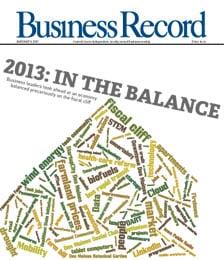Credit unions seek to fill business loan gap

.floatimg-left-hort { float:left; } .floatimg-left-caption-hort { float:left; margin-bottom:10px; width:300px; margin-right:10px; clear:left;} .floatimg-left-vert { float:left; margin-top:10px; margin-right:15px; width:200px;} .floatimg-left-caption-vert { float:left; margin-right:10px; margin-bottom:10px; font-size: 12px; width:200px;} .floatimg-right-hort { float:right; margin-top:10px; margin-left:10px; margin-bottom:10px; width: 300px;} .floatimg-right-caption-hort { float:left; margin-right:10px; margin-bottom:10px; width: 300px; font-size: 12px; } .floatimg-right-vert { float:right; margin-top:10px; margin-left:10px; margin-bottom:10px; width: 200px;} .floatimg-right-caption-vert { float:left; margin-right:10px; margin-bottom:10px; width: 200px; font-size: 12px; } .floatimgright-sidebar { float:right; margin-top:10px; margin-left:10px; margin-bottom:10px; width: 200px; border-top-style: double; border-top-color: black; border-bottom-style: double; border-bottom-color: black;} .floatimgright-sidebar p { line-height: 115%; text-indent: 10px; } .floatimgright-sidebar h4 { font-variant:small-caps; } .pullquote { float:right; margin-top:10px; margin-left:10px; margin-bottom:10px; width: 150px; background: url(http://www.dmbusinessdaily.com/DAILY/editorial/extras/closequote.gif) no-repeat bottom right !important ; line-height: 150%; font-size: 125%; border-top: 1px solid; border-bottom: 1px solid;} .floatvidleft { float:left; margin-bottom:10px; width:325px; margin-right:10px; clear:left;} .floatvidright { float:right; margin-bottom:10px; width:325px; margin-right:10px; clear:left;}
Christy Drake could hardly believe it when her bank called in her commercial real estate loan last year after a retail tenant in her investment property negotiated a lower lease payment with her.
“I never missed a payment, and I was never late; that was the shocker,” said Drake, who with her husband, Todd Drake, owns and operates two small businesses in Greater Des Moines.
After another local bank declined to renew an accounts receivable loan for the couple’s freight brokerage business, she spent several months shopping for different lenders. Then her son, commercial real estate broker Jeff Stanbrough, suggested applying at Johnston-based Community Choice Credit Union, where he has borrowed.
In addition to replacing financing that the banks would no longer provide, the couple has also been able to get construction loans from the credit union for their other business, Drake Homes.
“Community Choice has been a godsend for us,” Christy Drake said.
Credit union leaders say stories such as the Drakes’ aren’t uncommon, and that their institutions have been able to fill the lending gap now being left by the banks.
Despite the recession and the credit crisis, the dollar volume of business loans made in Iowa by credit unions grew by 17 percent in 2009, from $384.5 million in 2008 to nearly $450 million in 2009, according to the Iowa Credit Union League (ICUL).
Member business loans contributed to an overall 14 percent increase in lending by credit unions last year, said Pat Jury, ICUL president and CEO.
“Member business lending has always been important to credit unions,” Jury said, noting that loans to farmers date back to the early days of the credit union movement.
Credit unions are now seeking to raise a business lending cap imposed on them 12 years ago. Since a U.S. Supreme Court ruling in 1998, credit unions have been subject to a lending cap under which member business loans made by a credit union cannot exceed 12.25 percent of its assets.
“It was really a pill for credit unions to swallow to be able to accept more members,” Jury said. “Now we’re really starting to feel the effects of having the cap.”
Legislation now being considered by a congressional committee would raise the cap to 25 percent of assets, a move that is vehemently opposed by the Iowa Bankers Association and other bankers’ groups across the country.
The bipartisan bills, the Promoting Lending to America’s Small Businesses Act (H.R. 3380) and the Small Business Lending Enhancement Act (S. 2919), “would not only help credit unions; [they] would help small businesses that need access to capital,” said Julie Vande Hoef, director of government affairs for PolicyWorks, the credit union league’s lobbying arm.
“We’re working with the (Iowa) congressional delegation on those,” she said. Alternatively, the credit union lobbyists are also trying to have the revised cap included as part of other bills.
John Sorensen, president and CEO of the Iowa Bankers Association, said the legislation would be unfair to taxpayers as well as to banks.
“For one thing, taxpayers are providing credit unions with a very valuable tax exemption, which was given to them for a very specific purpose: to serve individuals of very limited means,” Sorensen said. “Also, there are only a small number of credit unions that would benefit from raising the cap, so the additional credit capacity is going to be meager, at best.”
Estimates made by the Credit Union National Association (CUNA), a national trade group, paint a different picture. According to the CUNA, credit unions would generate an additional $10 billion in member business loans in the first year the cap is lifted and create 108,000 jobs. In Iowa, raising the cap would mean an estimated $137 million in new loans and more than 1,400 jobs in the state.
Jury acknowledged that just “a handful” of Iowa credit unions are nearing the 12.25 percent cap, and that none have yet turned away business. However, the cap discourages additional credit unions from getting into business lending because it makes it less likely they’ll have enough volume to recoup the high start-up costs involved, he said.
From Jury’s perspective, “the banks have withdrawn from the (commercial lending) market, but they’re telling credit unions that we can’t get into that market,” he said.







